Lebanon/Armenian Catholics. The Courage to Exist.
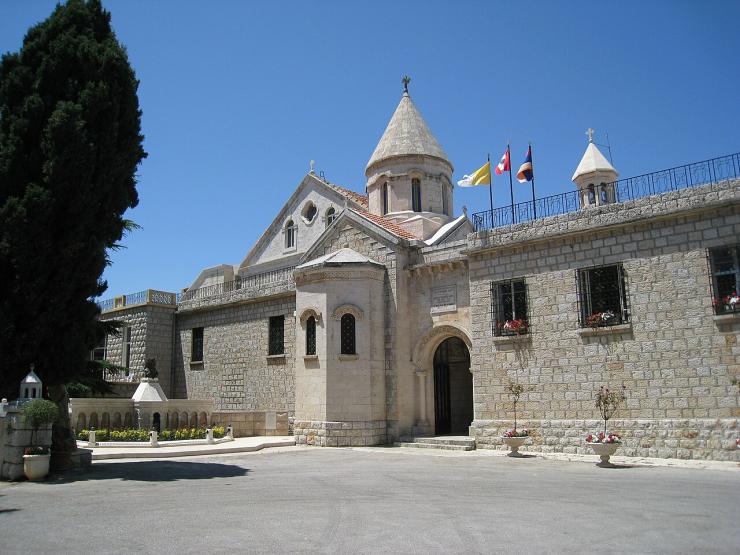
The history of the Armenian Catholic Church is made up of persecution but also of the courage to survive. In Lebanon, the church is engaged in the field of education and social affairs. The difficult political situation in the country. The explosion three years ago in the port of the capital left open wounds. We spoke with Msg Kévork Assadourian, Auxiliary Bishop of the Patriarchal Diocese of the Armenian-Catholic Church of Beirut.
When was the Armenian Catholic Church born?
Historically, the Armenian Church was the first Church in the world beyond the borders of the Roman Empire, and the Armenian people were the first to welcome the Christian faith. In fact, it was founded by Saint Gregory the Illuminator in 310, three years before the edict of Constantine (313). Syriac and Greek missionaries had come to Armenia to evangelize the Armenian people. At that time, before the Council of Chalcedon (451), relations between the Armenian Church and the Church of Rome were good.
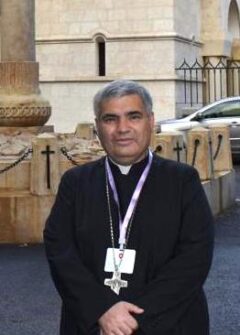
Msg Kévork Assadourian, Auxiliary Bishop of the Patriarchal Diocese of the Armenian-Catholic Church of Beirut. Photo: Jowana Khalil
During the Council, the Persians attacked Armenia, which borders Persia, to force the Armenians to renounce Christianity and embrace the ‘Religion of fire’ (the Persians were considered worshipers of fire in ancient times due to the singular importance fire had in their cults – editor’s note). Armenia revolted and tried to repel the Persians who greatly outnumbered them. The Armenians were forced to disperse, without losing their faith and so remained all the more faithful to Christianity.
Since the aggression of the Persians took place during the Council of Chalcedon, the Armenian patriarch and bishops could not participate in it and the Armenian Church was not represented in it, so it remained Monophysite and, unlike the Latin Church, believed the divine and human natures of Christ were one. In 1740, the Armenian bishop of Aleppo, with two other bishops, abandoned the Armenian Orthodox Church to establish the Armenian Catholic Church. The pope sanctioned this union and so the first patriarch founded three convents in Lebanon.
Why was Lebanon chosen?
That country had a reputation for tolerance, especially in the mountainous part where the seats of the Maronite, Syriac and Armenian Catholic patriarchs were, and are, still located. The majority of Armenians at that time lived in Turkey, but with the genocide (1915) many bishops, priests, nuns, and faithful were killed and our churches destroyed. For this reason, the Armenian people have lost much of their culture and history, but they continue to bear witness to the Christian faith in the world, and in the Middle East in particular.
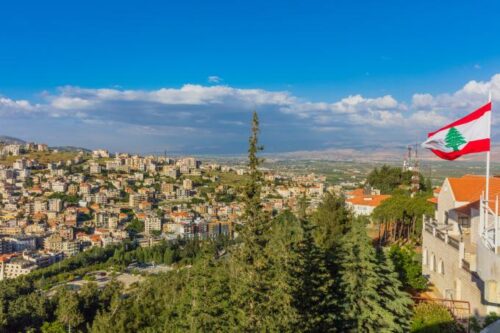
“The choice of Lebanon was because the country had a reputation for tolerance”. 123rf.com
Today, Catholic Armenians represent about 20 percent of Christian Armenians, 75 percent are Orthodox and 5 percent Protestant. In the 1990s, with the end of the USSR, we Armenians returned to Armenia and began to evangelize our people again. There were already Christian communities in the country, but in the 1920s the Soviet regime expelled all Catholic priests to Siberia, destroying the Armenian Catholic churches and eliminating the Armenian Catholic presence. The Orthodox, however, were able to remain, along with their Catholics.
Currently, there are about 250,000 Catholics in Armenia and 200,000 in Georgia. There are also Armenian Catholic priests in Ukraine, Hungary, Russia, and Romania. In 1991, Pope John Paul II appointed the first Armenian Catholic bishop for Eastern Europe.
How are relations with the Orthodox Armenians today?
They are very good. We keep alive the memory of saints and martyrs, especially on April 24 of each year when we solemnly remember Saint Vartan, the Armenian general, later canonized, who tried to defend Armenia from Persian aggression in the battle of Avarayr (2 June 451), falling on the field of battle.
How do you describe the Armenian Catholic Church in Beirut?
In the city, we have 7 parishes with 25 priests, as well as 2 parishes in the Bekaa Valley where Anjar, a completely Armenian village, is located. We also have 4 schools with thousands of students. Our seminarians study in the convent of Our Lady of Bzommar, which takes its name from the village of the same name.
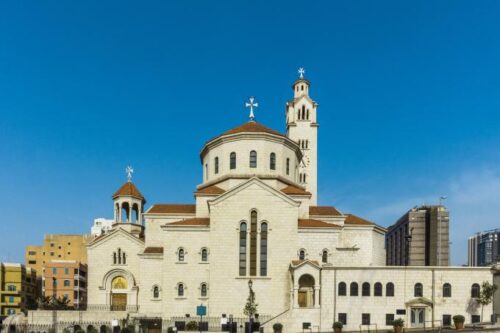
Saint Elias and Saint Gregory the Illuminator Armenian Catholic Cathedral in Beirut. 123rf.com
We, Armenian Catholic priests, are missionaries because we belong to the Institute of the Patriarchal Clergy of Bzommar. Our faithful are truly ‘faithful’; they attend church, pray and participate in the life of the community. I must remind you that the Armenians are not the only Catholics in Lebanon where the Latin, Syriac, Chaldean, Greek-Melkite, and Maronite Catholic Churches are also present. Many frequent the shrine of Our Lady of Lebanon in Harissa, where Muslims also come (Mary is venerated by Muslims as the mother of Jesus, and sura XIX of the Koran is dedicated to her – Editor’s note).
In which social works is the diocese active?
Up until four years ago, we could support poor families financially, but now it’s impossible because banks don’t allow companies or associations to withdraw money.
Only private individuals are allowed to do so. I could do it with my personal account, but the dollar/Lebanese lira exchange rate is so unfavourable that I would only get a fifth of the real value.
In this situation, we could no longer distribute money. Therefore, I have devised a different way to help: starting at 7 in the morning, every day we deliver a food package to 150 families, and a clinic is also open where we assist the poor and sick free of charge. We also take care of about forty elderly people who can come to have breakfast, spend the morning up to and including lunch, then go home. Finally, we distribute medicines that have become very expensive in Lebanon, shipping them from Turkey or Syria.
A large explosion in the port area of Beirut on August 4, 2020, killed 218 people and a further 7,000 injured. About 300,000 people, amounting to 2/3 of the population of the city, were left homeless by the disaster.
The seat of the Patriarchate is very close to the port, and we have suffered damage and injuries, with all the doors and windows swept away. An hour after the explosion, I was already at the site trying to help our families whom I know well because I had been a parish priest
in that area.
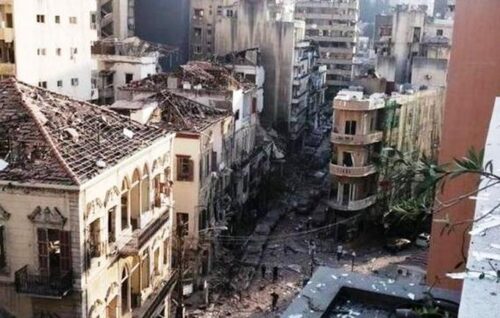
After the explosion in the port area of Beirut on August 4, 2020. Photo: MECC Communication and PR Department
I tried to accompany some of the wounded to the hospitals, but they were all full, so I took some to the Patriarchate where the nuns and some doctors who were present gave us a hand. Three years after the disaster, however, the investigations are at a dead end. Corruption and the economic and political crises that have plagued the nation for years have prevented those responsible for the disaster from being found.
In what situation is Lebanon today?
In 1975, civil war broke out between the Palestinians and the Lebanese army and Beirut was divided in two. Subsequently, the situation became more complicated, with the birth of armed Christian factions (Pierre Gemayel’s Falange) against the Palestinians and still later with the appearance of Hezbollah, the Shiite ‘Party of God’.
With the end of the civil war (1990), the leaders of the various militias effectively took power, managing public affairs as they pleased, in an organic system of sharing public money and corruption.
Today Lebanon is experiencing an unprecedented economic crisis, politics is very dirty, and politicians think only of themselves. The crisis is such that now banks do not allow account holders to withdraw their money and cheques cannot circulate. There is much fear for the future; even the aid promised by the International Monetary Fund is at risk due to the dominant corruption and party politics. (Open Photo: Headquarters of the Armenian Catholic Patriarchate in Bzoummar, Lebanon. CC BY-SA 3.0/Serouj)
Federico Tagliaferri/MO



